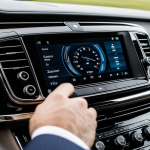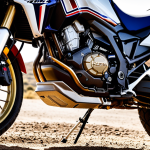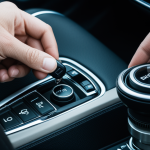Understanding Drift Dynamics
Understanding drift dynamics is crucial for enhancing car handling and perfecting drifting techniques. At its core, drifting involves maneuvering a car through controlled skids, a fundamental aspect of motorsport. Mastering drift dynamics enhances both performance and safety in competitive settings. To achieve this, drivers must meticulously balance throttle, brakes, and steering, skillfully manipulating the vehicle’s weight distribution.
When discussing drifting techniques, consider the art of countersteering, throttle application, and braking. These techniques, tailored to car handling, facilitate fluid drifts through corners. For instance, countersteering allows drivers to maintain control when their car’s rear wheels lose traction. Skilled drivers often rely on shifting weight, by adjusting speed and braking, to refine control and precision.
In the same genre : Augmentez la valeur de revente de votre voiture : les secrets de finition que tout propriétaire britannique devrait connaître
Vehicle handling significantly influences drift dynamics. An adeptly tuned suspension and quality tires play pivotal roles. Adjustments in the suspension system, such as changing camber angles, enhance grip and stability. Moreover, tire selection—factoring in composition and tread patterns—affects the vehicle’s responsiveness during a drift. A cohesive understanding and application of these elements enable drivers to execute precise, controlled drifts, ensuring both competitive prowess and safety on the track.
Legal Considerations for Car Modifications
When it comes to vehicle modifications in the UK, ensuring compliance with legal regulations is paramount. A variety of UK car laws govern modifications, particularly those related to drifting. Modifications must comply with safety standards to avoid penalties. The Vehicle and Operator Services Agency (VOSA) enforces these standards, ensuring that changes do not compromise vehicle safety or emissions.
In parallel : Navigating the risks of drug-impaired driving: a comprehensive guide to uk regulations and penalties
Common modifications, such as suspension upgrades, engine tuning, and exhaust system changes, often fall under scrutiny. Importantly, these modifications should not alter the vehicle’s classification or exceed noise limits. Compliance with these modifications regulations not only preserves vehicle legality but ensures that it remains roadworthy and insurable.
The consequences of non-compliance can include hefty fines, vehicle seizure, or worse, voided insurance policies. Undoubtedly, it’s crucial for enthusiasts to stay informed on the ever-evolving landscape of UK vehicle laws and regulations. To avoid the repercussions of illegal modifications, consulting with certified professionals and conducting thorough research before any modification is advised. Following the established guidelines keeps drifters on the right side of the law, allowing them to focus on refining their skills and enhancing vehicle performance.
Recommended Enhancements for Drift Performance
Elevating drift performance requires meticulous attention to car enhancements and modifications. Effective drift modifications begin with the suspension system. Utilizing adjustable coilovers allows drivers to tailor their vehicle tuning for optimal handling, essential for maintaining control during high-speed turns. Customizing camber and toe settings further refine balance, significantly enhancing grip during maneuvers.
When it comes to engine performance, discerning between turbocharging and supercharging is crucial. Turbocharging often provides more power, allowing for rapid acceleration, while supercharging can offer a linear power surge, ensuring seamless energy distribution. Yet, both modifications amplify engine stress, making robust cooling systems indispensable to preserve engine integrity and longevity.
Another pivotal aspect of drift modifications is selecting the right tires. Tire composition notably impacts drift dynamics, dictating traction and wear rates. Soft compound tires are generally favoured for their superior grip, though they necessitate frequent replacements. Noteworthy brands for drifting include Falken and Nitto, known for their reliability in competitive settings. To manage wear, regular tire rotation and alignment checks are recommended, prolonging tire life and maintaining peak performance throughout events. By fine-tuning these components, drivers can significantly elevate their drifting capabilities, ensuring both skill and safety on the track.
Safety Tips for Drifting
Drifting, an exhilarating motorsport, demands a strong commitment to drifting safety. Essential safety gear for drifters includes helmets, fire-resistant suits, and harnesses, creating a secure environment when you’re pushing boundaries on the track. These protective measures significantly mitigate the risk of injury.
Driving techniques play a vital role in maintaining safety. Gradual acceleration and smooth throttle adjustments help manage traction. A thorough understanding of how your car handles, especially during weight shifts, enhances your control. Developing these driving techniques reduces the likelihood of unexpected spins or collisions.
Risk management should not be underestimated. Practising in controlled environments allows drivers to hone their skills without the pressures of competitive drifting scenarios. It provides a safe arena for testing vehicle limits, experimenting with techniques, and understanding vehicle behaviours. Novice drifters gain confidence, improving precision and safety before venturing into competitive settings.
By investing in quality protective gear and focusing on controlled practice, drifters can enjoy this thrilling sport while prioritising their well-being. Balancing daring manoeuvres with calculated risk management ensures sustainable and enjoyable participation in drifting events.
Building Drift Skills
Developing expert drift skills requires dedicated practice and strategic training. It all begins with mastering the basics. Key maneuvers such as throttle control and precise steering inputs are crucial for effective drifting. These maneuvers ensure that drivers can maintain control over their vehicle’s trajectory, especially when managing various track conditions.
For those starting out, practicing initial exercises like figure-of-eights or donuts is beneficial. These exercises help beginners understand vehicle dynamics and improve their handling skills. In drift training, paying close attention to throttle application and steering response is essential for accuracy and smooth execution.
Advanced Drift Techniques
For those ready to advance, adopting techniques like countersteering and clutch-kicking can significantly enhance skill development. Techniques like clutch-kicking, which involves quickly engaging and releasing the clutch to initiate a drift, refine precision and control. Watching skilled drifters and analyzing videos can provide valuable insights, serving as excellent visual learning tools.
Joining Drifting Communities
Networking within drifting communities can propel skill improvement. Engaging with experienced drifters offers mentorship opportunities and practical advice, which is invaluable for progressing in the sport. Connecting with local drift groups and participating in events fosters camaraderie, enhancing both personal skills and enjoyment of the sport.
Choosing the Right Gear
Selecting the right drifting gear is instrumental for both safety and performance on the track. Essential equipment provides the protection drifters require, allowing for focus on developing skills under competitive conditions. Safety gear, including helmets and fire-resistant suits, is non-negotiable, as these items significantly minimize risks during intense maneuvers.
Safety Essentials
- Helmets: Should fit snugly and meet all safety standards, ensuring adequate protection in the event of a crash.
- Fire-resistant suits: Are crucial for shielding against unexpected flames, often made from materials like Nomex.
- Harnesses: Provide security and stability inside the vehicle while executing complex drifts.
Enhancing Performance
Beyond safety, car racing accessories also enhance the control and precision of drifts. Steering wheels designed for quick and precise maneuvers can transform driving dynamics. Quality racing seats and harnesses not only ensure safety but improve control by maintaining a consistent driving position, even under lateral forces.
Investing in appropriate gear, from basic safety equipment to specialized drifting accessories, enables drivers to increase their competitive edge while safeguarding against potential hazards.





